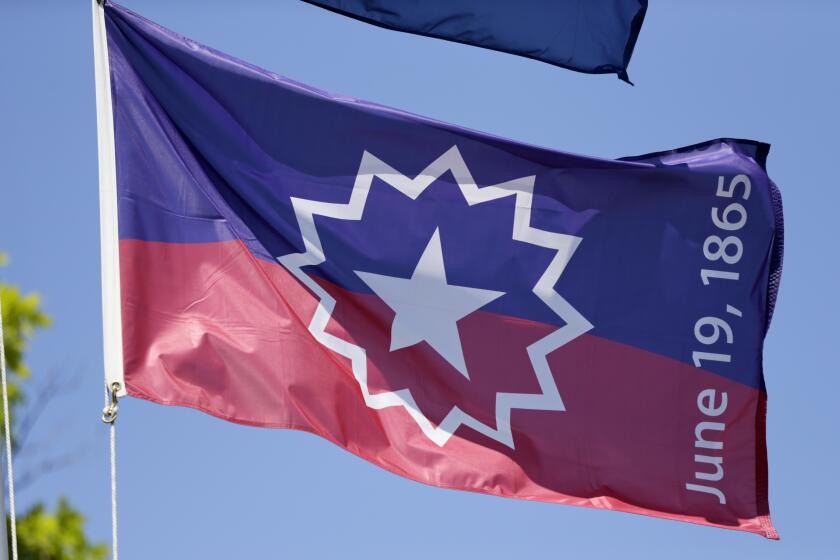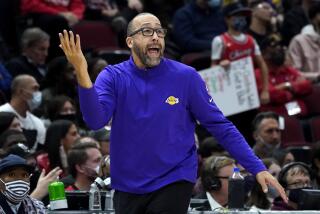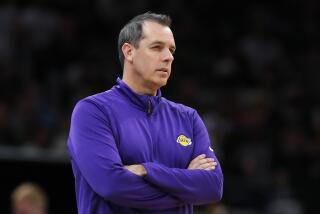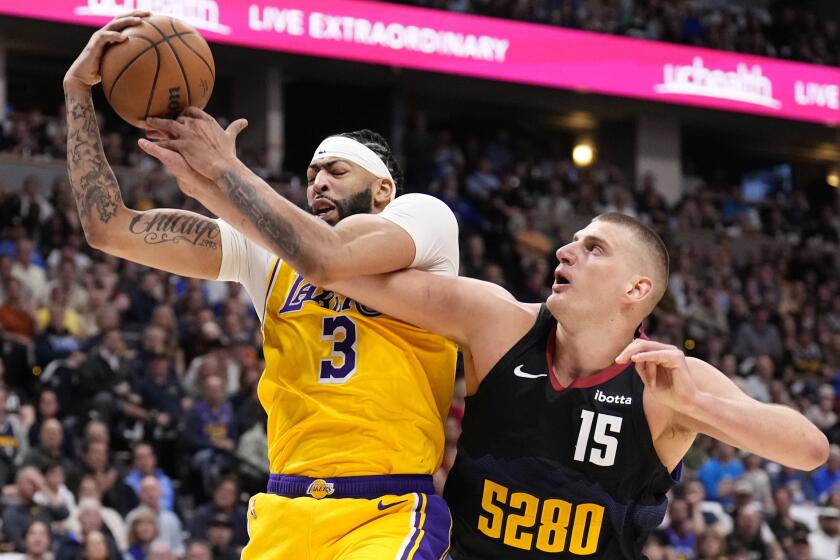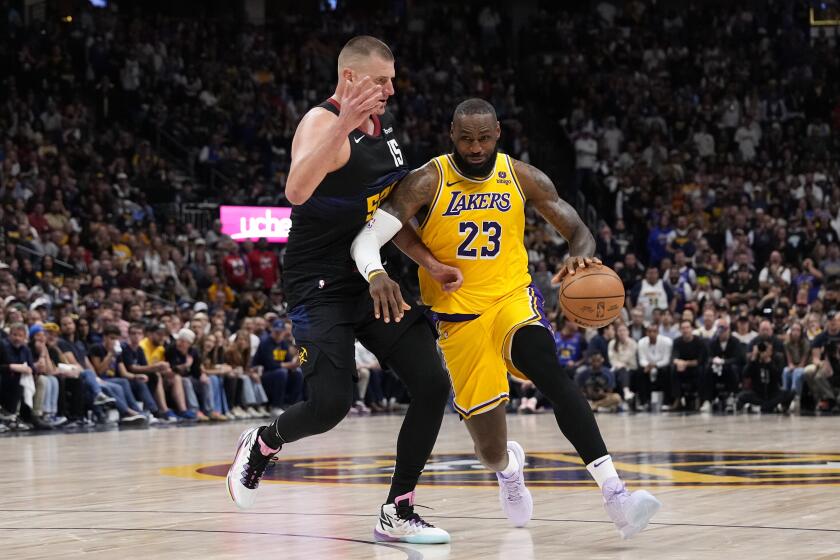Some Lakers were using Oura rings before COVID-19. Will more players wear them?
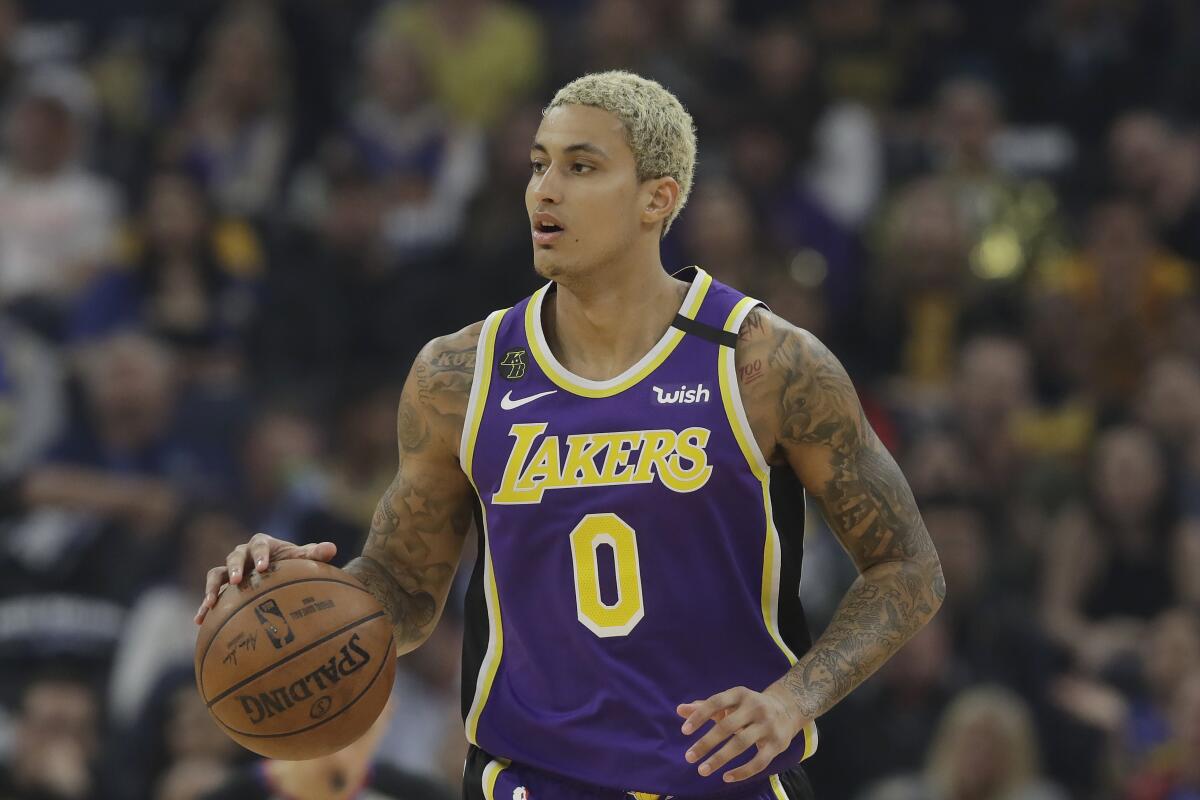
As the NBA attempts to restart its season despite rising cases of COVID-19 and rising numbers of hospitalizations because of the disease, it has placed an emphasis on being able to quickly discover and track the illness in players. One device the league is planning to make available for players in Orlando, Fla., is a ring that has sensors to measure different bodily functions.
The ring, produced by the company Oura, isn’t foreign to NBA circles. At least not in Los Angeles.
Judy Seto, the Lakers’ director of sports performance, wears one. In an interview that took place in February, Seto removed the titanium ring to show the glowing inside where sensors could detect different happenings in her body.
“The electronics of this one is similar to a Fitbit but it’s a little bit more accurate,” Seto said. “… I can get it wet. I can have impact on it and it doesn’t catch on anything. This tells me how long did it take for me to fall asleep. It tells me sleep cycles. Light sleep, deep sleep, REM sleep. How much did I get. Did I stay asleep or did I toss and turn at night? Gives me feedback of, ‘Hmm saw that you went to bed a little late or you kept on waking up at night. Is something bothering you?’ Your body temperature’s elevated, are you feeling well? Maybe you’re getting a little under the weather.”
The Lakers and Clippers on Thursday became the latest professional sports organizations to recognize Juneteenth, which commemorates the ending of slavery.
It’s the latter that the league is most interested in during the pandemic. One of the early symptoms of COVID-19 is a high fever. One study claims the Oura can detect the presence of the illness three days earlier than a swab test.
On social media, Lakers guard Kyle Kuzma expressed skepticism about the device: “Looks like a tracking device,” he said, adding an emoji of a face peering one eye through a monocle. Other NBA players and medical experts have raised concerns about the detection device.
The league is trying to assuage concerns like that. It says it won’t force any players to wear the rings but is planning to make them available according to memos distributed this week.
The NBA has also said players may not wear the rings during games. It has promised that while the data collected from the rings will be available to players, it won’t be available to team staff except to alert them that the players’ illness probability score is high enough that it shows a player is at higher risk or showing symptoms of COVID-19. The league also said the data won’t be used for commercial purposes, made public or be available for use in future contract negotiations.
The Lakers do not collect data acquired in these rings. They simply offer them as an option for players. And before the pandemic, the main goal was to use it to identify sleep patterns.
“Some do,” Seto said, when asked in February whether players have chosen to wear the ring. “There’s an app on the phone that you can do. There’s also different devices. Some just wear it in the evening. But it’s really individual and it’s education. Instead of trying to be intrusive or controlling, it’s working with them and educating them on it. With our travel schedule, it’s difficult sometimes to get enough sleep, but by educating people and the importance of sleep, hopefully making sleep more of a priority instead of it plays no factor in what we do.”
More to Read
All things Lakers, all the time.
Get all the Lakers news you need in Dan Woike's weekly newsletter.
You may occasionally receive promotional content from the Los Angeles Times.
